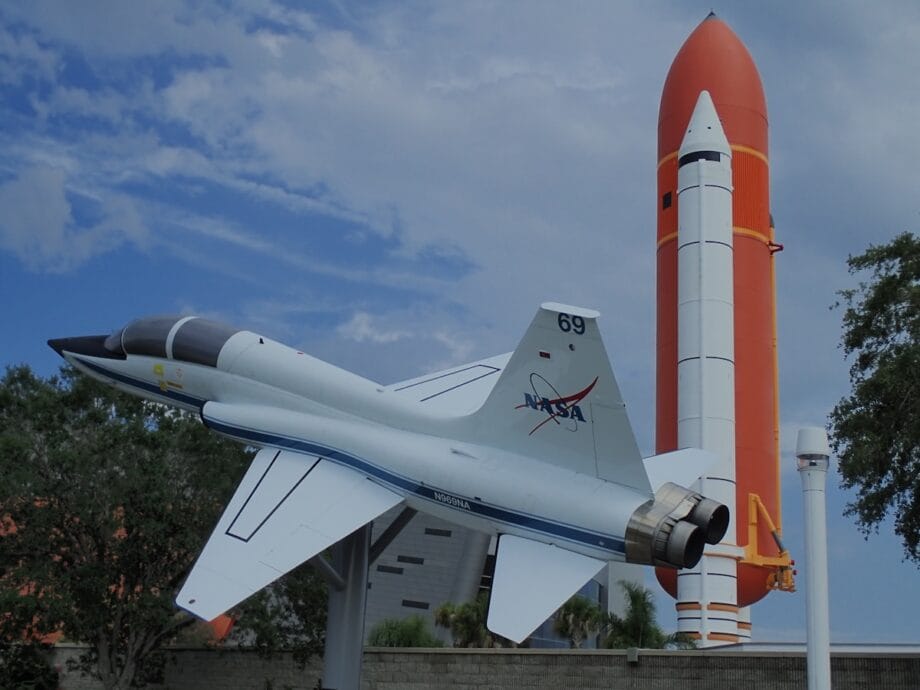DASA Funding and DSTL Support Propel Innovation
- The Defence and Security Accelerator (DASA) funding, alongside Defense Science and Technology Laboratory (DSTL) assistance, has facilitated Oxford Space Systems in evolving from concept to a flight-ready prototype of a deployable wrapped rib antenna.
- DASA’s Defence Innovation Loans have underpinned crucial advancements leading to the inaugural in-orbit demonstration.
- A significant doubling of the engineering workforce from 50 to over 100 has catalyzed major contract acquisitions, encompassing the Oberon project and international export agreements.
- A pivotal milestone was achieved in 2025 with the company’s endorsement for participation in the Oberon initiative.
Mission-Critical Technological Breakthrough
In the expansive realm of outer space, a diminutive satellite, comparable in dimensions to a household washing machine, meticulously unfurls a sophisticated dish antenna, augmenting its surface area by a factor of sixteen.
In mere seconds, this compact satellite transforms into a state-of-the-art synthetic aperture radar (SAR) system capable of capturing intricate, high-resolution images of terrestrial landscapes. This landmark achievement reflects Oxford Space Systems’ innovative reimagining of space technology.
Supported by DASA’s strategic investments and technical acumen from Dstl, this pioneering technology promises not only significant technical advancements but also substantial economic and strategic implications.
Traditional SAR missions necessitate platforms approximately the size of a double-decker bus, incurring launch costs that can soar into the hundreds of millions of pounds.
In stark contrast, Oxford Space Systems’ deployable antenna technology enables similar capabilities on significantly smaller units at a fraction of the expense, allowing for the synchronization of multiple satellites to enhance coverage and facilitate more frequent updates.
A Visionary Approach by Oxford Space Systems
Established in 2013 at the Harwell Campus, Oxford Space Systems emerged with a novel proposition: why release cumbersome, costly spacecraft when one could integrate extensive antenna functionalities into compact, economical platforms?
“We specialize in adapting antenna technology typically reserved for larger spacecraft to formats akin to those of domestic appliances,” states Chris Bee, Business Development Director. “By reducing launch costs and enabling constellation strategies, we are fundamentally altering defense organizations’ perspectives on space capabilities.”
This distinctive methodology intertwines conventional space engineering with insights drawn from unexpected arenas such as Formula One engineering and textiles, engendering antennas that deploy using stored spring energy rather than intricate mechanical mechanisms.
Transforming Conceptualization into Operational Capability Through DASA Funding
DASA’s investment in Oxford Space Systems unfolded across multiple progressive phases, each building upon its predecessors to transition concepts into operational functionalities, consistently supported by Dstl’s technical experts.
The initial DASA funding, obtained in 2019, was instrumental in advancing the development of parabolic antenna technology during the company’s formative phase. This funding allowed the team to perfect their iconic wrapped rib antenna manufacturing processes and to establish in-house mesh knitting capabilities.
Further financial support in 2022 and 2023 facilitated the collaborative flight effort alongside Surrey Satellite Technology Ltd (SSTL), based in Guildford.
In conjunction, a DASA-funded initiative focused on minimizing satellite dimensions, weight, power consumption, and costs through a distinct technology aiming to deploy pillar-like helical antennas for generating narrow communication beams.
This illustrates DASA’s holistic commitment to nurturing the company’s technological evolution across diverse space technology avenues.
A substantial part of the initial development revolved around mitigating risks associated with the wrapped rib antenna concept and advancing it into viable hardware,” remarks Chris Bee. “DASA funding was crucial in refining the designs and manufacturing processes pivotal to the antenna’s market readiness.
Drawing from experiences in subsystem testing, including thermal vacuum simulations of space conditions at the company’s facilities, these initial endeavors culminated in an engineering model demonstrating the feasibility of large deployable antennas for defense utilization, with advanced RF tests confirming performance efficacy.
Proving the Concept: Defence Innovation Loans
Building upon a robust foundation, subsequent DASA financial support in 2022 and 2023 through the Defence Innovation Loans scheme facilitated the vital next step: launching antenna hardware into space.
This loan enabled Oxford Space Systems to engineer and execute their maiden in-orbit demonstration—a pivotal achievement in a sector where credibility hinges on actual space launch experience. The flight unit successfully navigated rigorous testing protocols, including vibration simulations, before being delivered to SSTL for imminent dispatch to SpaceX in the United States for launch.
This milestone has laid the groundwork for subsequent initiatives, including funding for terrestrial applications tailored to enhance dismounted soldier satellite communications. This project is aimed at addressing the operational necessity of alleviating the satellite communications (SatCom) equipment weight burdens borne by soldiers, demonstrating that commercial SatCom can be harnessed for secure communications with significantly enhanced data rates and capacities.
The Oberon Project: A Landmark Achievement
Oxford Space Systems’ trajectory reached a significant juncture in 2025 with their selection for the Oberon project, a venture dedicated to launching a demonstrator for a high-resolution synthetic aperture radar operational system.
Partnering with Airbus, which will provide the payload and spacecraft, Oxford Space Systems is tasked with delivering critical deployable antennas, enabling high-resolution imagery in varying weather conditions around the clock.
“This marks the inaugural UK demonstrator for an operational system that collects high-resolution synthetic aperture radar imagery at these frequencies,” declares Chris Bee. “It has solidified our partnership with Airbus, opening doors to promising export opportunities ahead.”
Fostering Indigenous Capabilities
The ramifications of DASA’s investment transcend mere commercial impact. Following the DASA funding, the growth of the wrapped rib product correlated with team expansion to over 50 specialists and the overall workforce exceeding 100, including additional production facilities.
A diverse portfolio has emerged from the original DASA investment,” muses Chris Bee. “Beyond the Oberon project, we have successfully secured export contracts with clients from Norway, Spain, and the United States, while cultivating stronger alliances with major defense contractors such as Airbus.
Future Prospects
Oxford Space Systems is now poised to focus on securing repeat orders and broadening its array of wrapped rib antennas, introducing variants and other deployable technologies. With the Oberon satellites slated for launch in 2027, the company is strategically positioned to showcase the operational competency of their technology.
In the coming years, our focus remains on enhancing our manufacturing capabilities to meet repeat orders,” notes Chris Bee. “We are committed to evolving and expanding our product offerings.
Transitioning from startup to a vital supplier within the UK defense apparatus, Oxford Space Systems epitomizes the transformative effects of DASA’s strategic investments in nascent technologies, fostering indigenous capabilities that would otherwise remain unattainable for the UK’s defense and space sectors.
Chris Bee concludes, “Collaboration with DASA and DSTL has proven revolutionary for our enterprise, providing indispensable support spanning early prototype development through to flight, precisely what growth-oriented firms require to sustain momentum while innovating new capabilities for the UK.

The path to engineering success is fraught with uncertainty; DASA personnel have been exceptionally supportive, flexible, and integral in our journey to innovate and improve our supply chain and in-house capacities.
With the heightened export potential garnered from mature product lines, our confidence in the future has been significantly bolstered as a consequence of the assistance received.
Source link: Miragenews.com.






